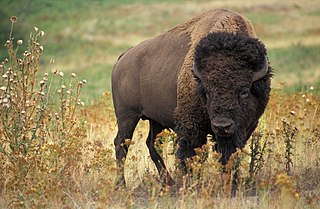 W
WThe American bison or simply bison, also commonly known as the American buffalo or simply buffalo, is an American species of bison that once roamed North America in vast herds. Its historical range, by 9000 BC, is described as the great bison belt, a tract of rich grassland that ran from Alaska to the Gulf of Mexico, east to the Atlantic Seaboard as far north as New York and south to Georgia and, according to some sources, further south to Florida, with sightings in North Carolina near Buffalo Ford on the Catawba River as late as 1750. It nearly became extinct by a combination of commercial hunting and slaughter in the 19th century and introduction of bovine diseases from domestic cattle. With a population in excess of 60 million in the late 18th century, the species was down to just 541 animals by 1889. Recovery efforts expanded in the mid-20th century, with a resurgence to roughly 31,000 wild bison today, largely restricted to a few national parks and reserves. Through multiple reintroductions, the species is now also freely roaming wild in some regions in the United States, Canada, and Mexico, with it also being introduced to Yakutia in Russia.
 W
WThe American Bison Society (ABS) was founded in 1905 by pioneering conservationists and sportsmen including Ernest Harold Baynes, William T. Hornaday and Theodore Roosevelt to help save the bison from extinction and raise public awareness about the species.
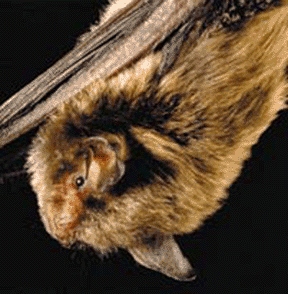 W
WThe Indiana bat is a medium-sized mouse-eared bat native to North America. It lives primarily in Southern and Midwestern U.S. states and is listed as an endangered species. The Indiana bat is gray, black, or chestnut in color and is 1.2–2.0 in long and weighs 4.5–9.5 g (0.16–0.34 oz). It is similar in appearance to the more common little brown bat, but is distinguished by its feet size, toe hair length, pink lips, and a keel on the calcar.
 W
WThe Badlands bighorn, Ovis canadensis auduboni, also commonly known as Audubon's bighorn sheep, is an extinct subspecies of bighorn sheep of the northern Great Plains in North America. Its existence as a separate subspecies is disputed.
 W
WThe Plains bison is one of two subspecies/ecotypes of the American bison, the other being the wood bison. A natural population of Plains bison survives in Yellowstone National Park and multiple smaller reintroduced herds of bison in many places in the United States as well as southern portions of the Canadian Prairies.
 W
WThe bullsnake is a large, nonvenomous, colubrid snake. It is a subspecies of the gopher snake. The bullsnake is one of the largest/longest snakes of North America and the United States, reaching lengths up to 8 ft.
 W
WThe coyote is a species of canine native to North America. It is smaller than its close relative, the wolf, and slightly smaller than the closely related eastern wolf and red wolf. It fills much of the same ecological niche as the golden jackal does in Eurasia. The coyote is larger and more predatory and was once referred to as the American jackal by a behavioral ecologist. Other historical names for the species include the prairie wolf and the brush wolf.
 W
WThe Manitoban elk is a subspecies of elk found in the Midwestern United States and southern regions of the Canadian Prairies. In 2001-2002, a breeding population of 52 Manitoban elk was also introduced into the Cataloochee valley of the Great Smoky Mountains National Park in North Carolina to replace a population of Eastern elk which had gone extinct over 100 years prior. As of 2021, the population has grown to 150-200 individuals and has expanded their range outside of their initial protected region. In 2016, one of the elk from the North Carolina herd was spotted in South Carolina, the first time an elk had been seen in that state since the late 1700s.
 W
WThe swift fox is a small light orange-tan fox around the size of a domestic cat found in the western grasslands of North America, such as Montana, Colorado, New Mexico, Kansas, Oklahoma and Texas. It also lives in southern Manitoba, Saskatchewan and Alberta in Canada, where it was previously extirpated. It is closely related to the kit fox and the two species are sometimes known as subspecies of Vulpes velox because hybrids of the two species occur naturally where their ranges overlap.
 W
WPantherophis emoryi, commonly known as the Great Plains rat snake, is a species of nonvenomous rat snake native to the central part of the United States, from Missouri to Nebraska, to Colorado, south to Texas, and into northern Mexico.
 W
WThe Great Plains toad, Anaxyrus cognatus, is a relatively large species of true toad native to central North America.
 W
WThe Great Plains wolf, also known as the buffalo wolf or loafer, is an extinct subspecies of gray wolf that once extended throughout the Great Plains, from southern Manitoba and Saskatchewan in Canada southward to northern Texas in the United States. The subspecies was declared extinct in 1926. They were described as a large, light-colored wolf but with black and white varying between individual wolves, with some all white or all black. The Native Americans of North Dakota told of how only three Great Plains wolves could bring down any sized bison.
 W
WThe olive-backed pocket mouse is a species of rodent in the family Heteromyidae. It is found in the central Great Plains of Canada and the United States where it is widespread and relatively common; the IUCN considers it to be of "least concern".
 W
WThe northern spiny softshell turtle is a subspecies of soft-shelled turtle in the family Trionychidae. The subspecies is native to the United States and can be found from Montana at the western edge of its range to Vermont and Quebec on the eastern edge. Introduced populations have also been found in Massachusetts, New Jersey, Arizona, and Virginia.
 W
WThe smooth green snake is a species of North American nonvenomous snake in the family Colubridae. The species is also referred to as the grass snake. It is a slender, "small medium" snake that measures 36–51 cm (14–20 in) as an adult. It gets its common name from its smooth dorsal scales, as opposed to the rough green snake, which has keeled dorsal scales. The smooth green snake is found in marshes, meadows, open woods, and along stream edges, and is native to regions of Canada, the United States, and northern Mexico. A non-aggressive snake, it seldom bites and usually flees when threatened. It mates in late spring to summer, and females lay their eggs from June to September.
 W
WThe Virginia opossum, commonly known as the North American opossum, is the only opossum found north of Mexico, with its range additionally extending south into Central America. Its range makes it both the northernmost opossum and the northernmost marsupial in the world. In the United States, the animal is typically referred to simply as a possum ('possum) or an opossum. It is a solitary and nocturnal animal about the size of a domestic cat, and a successful opportunist.
 W
WPantherophis emoryi, commonly known as the Great Plains rat snake, is a species of nonvenomous rat snake native to the central part of the United States, from Missouri to Nebraska, to Colorado, south to Texas, and into northern Mexico.
 W
WThe bullsnake is a large, nonvenomous, colubrid snake. It is a subspecies of the gopher snake. The bullsnake is one of the largest/longest snakes of North America and the United States, reaching lengths up to 8 ft.
 W
WThe plains garter snake is a species of garter snake native to most of the central United States as far north as Canada and as far south as Texas. It has a distinctive orange or yellow stripe from its head to tail, and the rest of its body is mainly a gray-green color. The snake is commonly found living near water sources such as streams and ponds, but can also be found in urban areas and vacant lots. Although the IUCN lists the species as "Least Concern", some states have given it their own special status. This species is mildly venomous, although the venom is not toxic to humans.
 W
WThe Plains leopard frog It is sometimes referred to as Blair's leopard frog, named after the noted zoologist and University of Texas professor, Dr. W. Frank Blair.
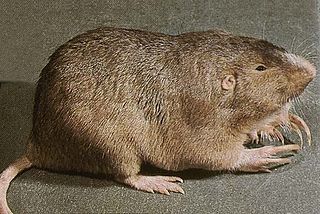 W
WThe plains pocket gopher is one of 35 species of pocket gophers, so named in reference to their externally located, fur-lined cheek pouches. They are burrowing animals, found in grasslands and agricultural land across the Great Plains of North America, from Manitoba to Texas. Pocket gophers are the most highly fossorial rodents found in North America.
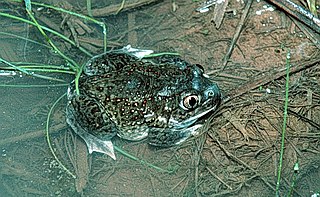 W
WThe plains spadefoot toad is a species of American spadefoot toad which ranges from southwestern Canada, throughout the Great Plains of the western United States, and into northern Mexico. Like other species of spadefoot toads, they get their name from a spade-like projections on their hind legs which allow them to dig into sandy soils. Their name, in part, comes from their keratinized metatarsals, which are wide instead of "sickle shaped". The species name translates as buzzing leaf shaped. This refers to the species distinguishing features; its buzzing mating call, and its leaf-shaped digging metatarsals. First described by Cope in 1863.
 W
WPrairie dogs are herbivorous burrowing rodents native to the grasslands of North America. The five species are: black-tailed, white-tailed, Gunnison's, Utah, and Mexican prairie dogs. They are a type of ground squirrel, found in North America. In Mexico, prairie dogs are found primarily in the northern states, which lie at the southern end of the Great Plains: northeastern Sonora, north and northeastern Chihuahua, northern Coahuila, northern Nuevo León, and northern Tamaulipas. In the United States, they range primarily to the west of the Mississippi River, though they have also been introduced in a few eastern locales. They are also found in the Canadian Prairies. Despite the name, they are not actually canines.
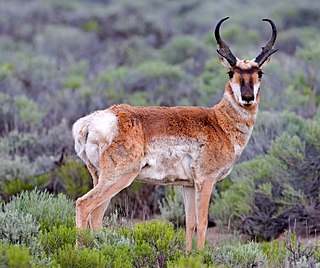 W
WThe pronghorn is a species of artiodactyl mammal indigenous to interior western and central North America. Though not a true antelope, it is known colloquially in North America as the American antelope, prong buck, pronghorn antelope, prairie antelope, or simply antelope because it closely resembles the antelopes of the Old World and fills a similar ecological niche due to parallel evolution. It is the only surviving member of the family Antilocapridae.
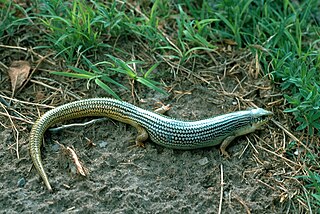 W
WThe Great Plains skink (Plestiodon obsoletus) is a species of lizard endemic to North America.
 W
WThe smooth green snake is a species of North American nonvenomous snake in the family Colubridae. The species is also referred to as the grass snake. It is a slender, "small medium" snake that measures 36–51 cm (14–20 in) as an adult. It gets its common name from its smooth dorsal scales, as opposed to the rough green snake, which has keeled dorsal scales. The smooth green snake is found in marshes, meadows, open woods, and along stream edges, and is native to regions of Canada, the United States, and northern Mexico. A non-aggressive snake, it seldom bites and usually flees when threatened. It mates in late spring to summer, and females lay their eggs from June to September.
 W
WThe common garter snake is a species of natricine snake, which is indigenous to North America and found widely across the continent. Most common garter snakes have a pattern of yellow stripes on a black, brown or green background, and their average total length is about 55 cm (22 in), with a maximum total length of about 137 cm (54 in). The average body mass is 150 g (5.3 oz). Common garter snakes are the state reptile of Massachusetts.
 W
WSlowinski's corn snake is a species of nonvenomous snake in the family Colubridae. The species is indigenous to Louisiana, eastern Texas, and Arkansas.
 W
WThe Texas garter snake is a subspecies of the common garter snake endemic to the United States.
 W
WThe ornate box turtle is one of only two terrestrial species of turtles native to the Great Plains of the United States. It is one of the two different subspecies of Terrapene ornata. It is the state reptile of Kansas. It is currently listed as threatened in Illinois and is of concern and protected in six Midwestern states. The ornate box turtle is a relatively small turtle. Males and females generally look alike but males are often smaller; there is color variation with yellow lines from the center of the shell to the edges through gray, red-brown, or black coloration. Besides the size, males can be distinguished from females in several ways; a large curved inner claw on the back feet, a cloacal opening that is farther back in males, a longer and thicker tail, and reddish color on the legs and occasionally on the jaw.